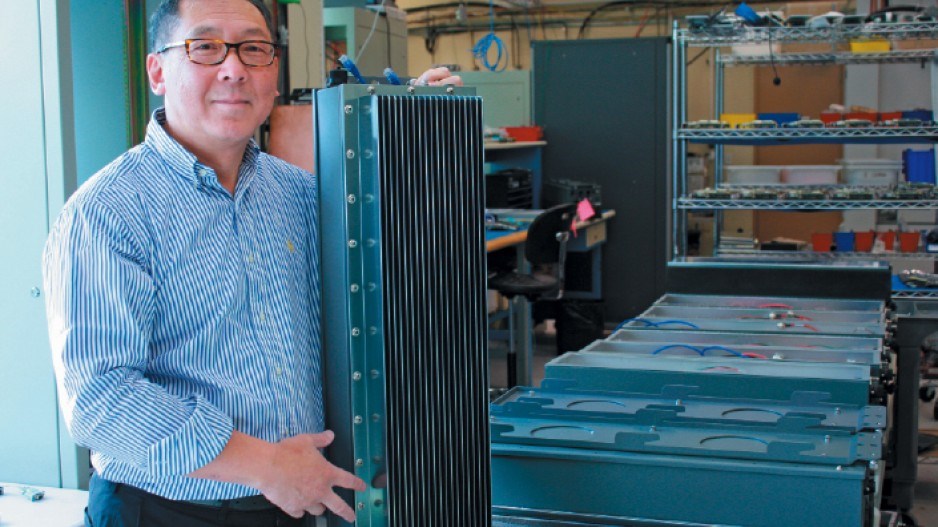When Hurricane Sandy hammered New York last year, it took several days to restore cellphone service in parts of the city.
Jack Mar’s daughter was in New York at the time, and he couldn’t get through to her cellphone to see if she was OK.
There’s some irony there because Mar’s company, Star Solutions, makes the IMPAC, a cellular network system that fits in a backpack and could have been deployed within hours to provide sections of New York with temporary emergency cellphone service.
“My daughter was in New York when it happened,” said the Star Solutions CEO. “She was going to school there. All of a sudden I couldn’t text her anymore. All I needed to see was a text saying ‘I’m all right.’ This [the IMPAC] would solve that. In one hour, we could make that happen.”
The IMPAC does what a cellular microwave tower does, albeit on a smaller scale, and can be deployed anywhere to provide local cell service.
Add a portable satellite receiver, and it allows long-distance calls, texting and data. In other words, it’s a mobile phone network that is itself mobile.
It is just the latest innovation from the Richmond-based company, which specializes in providing cellular phone equipment for remote regions of the world – from Alaska to Afghanistan – as well as about 180 cruise ships.
The company has also managed to shrink all the functionality of a cellular microwave tower down to a device, called the iCell COMPAC, the size of a large stereo speaker, which anyone can set up virtually anywhere.
From its 100-person operations in Richmond, Star Solutions sells its equipment to telecoms, mobile carriers and corporations that need to provide cellular phone service in areas that don’t have the physical infrastructure or population densities needed to run traditional cellular networks.
It has carved out a niche that isn’t being served by global players like Ericsson (Nasdaq:ERIC) and Huawei, which dominate the mobile network infrastructure sector.
“We decided we would specialize in the world’s hard-to-reach areas, enterprise service,” Mar said, “and we specialize in emergency and disaster.”
Mining and other resource companies use Star Solutions equipment to create private cellular phone services in remote areas.
General Communications Inc. (Nasdaq:GNCMA) in Anchorage uses Star Solutions network switches to provide cell service to more than 140 communities in Alaska, most of which rely on satellite, and Northwest Tel Mobility uses it to serve the Northwest Territories and Nunavut.
AT&T (NYSE:T) uses Star Solutions satellite-based cell networks to provide cell coverage on cruise ships, which use satellite.
Chris Allen, president of ABC Communications, which provides broadband Internet and wireless to rural areas of B.C., said satellite-based wireless has its limitations, especially when it comes to Internet data speeds. But it beats nothing at all.
“There [are] a lot of rural communities that are left off the map, cellular-wise,” Allen said, “and I don’t know if they’ll ever get on the map without something like what Star Solutions is doing.”
Hazim Sharif, senior product manager for Wavefront, which helps Canadian wireless companies develop and commercialize their technologies, said the market for Star Solutions mobile networks is significant in two areas: load balancing and public safety.
For events like the Olympics, when mobile phone use spikes, carriers typically deploy COWs (carriers on wheels) to provide additional capacity. The large mobile cell towers are housed in trucks that require generators and technicians.
Star Solutions has shrunk all that down to the size of a beer fridge that requires no technicians.
“This is a much more practical solution [than COWs],” Sharif said. “For managing capacity, or remote area coverage, disaster locations – all those are areas that could be covered by Star Solutions.”
He added that the market for emergency services for public safety is particularly massive.
“According to the market research, the overall market spending is expected to increase from $15.2 billion in 2009 to $22.3 billion in 2015.”




